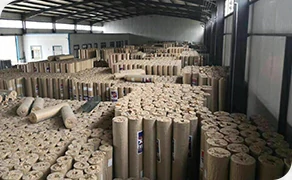 TEL:
+86-13102802206
TEL:
+86-13102802206
 Email:
fencenetting@china.com
Email:
fencenetting@china.com
 Language
Language
 TEL:
+86-13102802206
TEL:
+86-13102802206
 Email:
fencenetting@china.com
Email:
fencenetting@china.com
 Language
Language


The Versatility of Weld Mesh A Comprehensive Overview
Weld mesh, also known as welded wire mesh or welded wire fabric, is a versatile construction material that has found applications across various industries. Composed of a series of welded wires arranged in a grid pattern, it offers exceptional strength, durability, and an array of benefits that make it an ideal choice for numerous applications. This article delves into the features, advantages, and applications of weld mesh.
Composition and Features
Weld mesh is typically made from high-quality steel wires that are welded at their intersections to create a rigid structure. The mesh can vary in wire diameter, mesh opening size, and overall dimensions, making it customizable to meet specific requirements. While steel is the most common material used, weld mesh can also be fabricated from stainless steel or coated with PVC for enhanced corrosion resistance.
The welding process used in manufacturing weld mesh ensures that each intersection is incredibly strong, providing a robust product capable of withstanding significant loads and stresses. The grid-like design allows for efficient light and air flow while maintaining structural integrity, making it a suitable choice for both indoor and outdoor applications.
Advantages of Weld Mesh
One of the primary advantages of weld mesh is its strength-to-weight ratio
. Despite its lightweight nature, it can support considerable weight, making it ideal for use in construction and reinforcement. Additionally, weld mesh is easy to handle and transport, which simplifies the installation process and reduces labor costs on job sites.Another significant benefit is its versatility. Weld mesh can be used in various forms as fencing, reinforcement in concrete, and even as support structures in agricultural settings. Its adaptability to different environments—whether it be a garden, construction site, or industrial facility—makes it a preferred choice among builders and contractors.

Moreover, the durability of weld mesh significantly contributes to its longevity. When properly coated, it can resist rust and corrosion, ensuring it maintains its functionality and appearance over time. This characteristic reduces the frequency of replacement or maintenance, offering an economical solution in the long run.
Applications of Weld Mesh
The applications of weld mesh are vast and varied. In the construction industry, it is often used for reinforcing concrete slabs, beams, and walls, enhancing their load-bearing capacities. The grid structure provides better crack control and increases the overall longevity of concrete structures.
In the agricultural sector, weld mesh serves as fencing for livestock, protecting them from predators and providing a safe environment. Additionally, it is commonly used in gardening and landscaping for trellises and plant supports.
Weld mesh has also found a place in industrial settings. It is utilized for securing machinery, creating safety barriers, and forming cages for storage. The transparent nature of the mesh allows for visibility while ensuring safety.
In residential applications, weld mesh can be transformed into decorative garden features, window guards, or even custom furniture pieces, illustrating its aesthetic potential alongside its functional benefits.
Conclusion
In summary, weld mesh is a remarkably versatile material with an expansive range of applications. Its combination of strength, durability, and adaptability makes it invaluable across construction, agriculture, and industrial sectors. Whether it's providing structural support, enhancing safety, or serving a decorative purpose, weld mesh continues to be a reliable choice for builders and designers alike. As industries evolve, the role of weld mesh is likely to grow, further solidifying its place in modern construction and design.